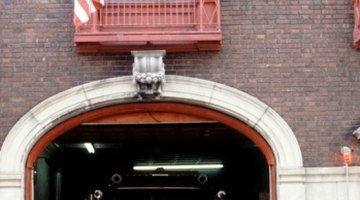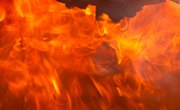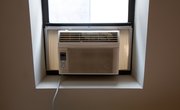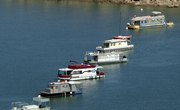The thought of a fire happening breaking out where you or friends or family are present, is an absolutely terrifying thought. Luckily, there are systems in place to help get firemen to the place of a fire as soon as possible. Multiple-alarm fires is a convention used in the United States to quickly communicate and understand the severity of a fire. For instance, news outlets report on incidents such as a "four-alarm fire" to indicate a blaze that is more difficult to handle than a "two-alarm fire." While it is true the higher degree of the fire alarm, the more firefighters are dispatched to battle the blaze, this is not a one alarm to one fire house relationship.
Tip
There are several different degrees of fire alarms, and they are all based on how serious the fire is, how quickly responders can react to it and how many responders are needed to put out the fire. In general, there are one alarm fires, multiple alarm fires (up to a three fire alarm) and five alarm fires. However, more serious fires can be considered well over a five alarm fire.
Unit Response Protocols
Fire departments have dispatch systems which receive emergency requests and coordinate the efforts of firefighters. To aid in communication, each department has a series of short codes that correspond to actual information. In New York, 10-21 means "one alarm fire." Each of the fire alarm degrees require a different number of response units, which can be any type of vehicle including fire engines, ladder trucks and supervisor trucks. Fire companies send a different number of response units for each degree alarm, depending on the city you are in.
One Alarm Fire
When an emergency call is received by the fire department, a discovery set of units are dispatched to the location in question, often called a "box" alarm. If the first responders confirm there is a blaze happening, a one alarm fire is issued. Once this happens, an additional set of units are dispatched to the location to battle the blaze. The exact number of units that respond varies based on your location. For instance, in Washington, DC a one alarm fire indicates six fire engines, three ladder trucks, one rescue squad, two fire chiefs and one ambulance are on scene.
Multiple Alarm Fire
First responders on the scene of a fire are the best to assess the situation's severity. They communicate the size and intensity of the blaze to dispatchers and raise the degree of the fire alarm to a multiple alarm fire as necessary, i.e. two alarm fire, three alarm fire. Each time the degree moves up, additional units are dispatched to the scene of the fire both to relieve units and to further support firefighting efforts.
A Five Alarm Fire and Up
Theoretically, an enormous blaze can escalate the degree of a fire alarm indefinitely. However, there are norms. For instance, the New York Fire Department has a short code system that only accommodates up to a five alarm fire, assuming that the worse situations will still only escalate up to this point and can be therefore be contained.
However, even though a five alarm fire is quite high, there are instances where blazes can reach a 10 alarm fire level and fire companies that do not have a system that can accommodate a fire this large, may find themselves in trouble. As fire companies contain situations, intensity lowers as does the degree of the fire alarm.
Related Articles
References
Writer Bio
Iam Jaebi has been writing since 2000. His short story, "The Alchemist," reached over 250,000 readers and his work has appeared online in Thaumotrope and Nanoism. His novel, "The Guardians," was released in 2010 by Imagenat Entertainment. Jaebi is also a business writer specializing in company naming, concept designs and technical writing. He graduated from Syracuse University with a Bachelor of Science in computer engineering.











